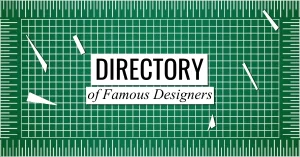Startups often face resource constraints, and making the most of every dollar is crucial for their success. However, design is an essential aspect of creating a product or service that resonates with customers and stands out in the market. This article explores how startups can implement cost-saving design thinking to maximise the impact of their design efforts while staying within their budget.
What is Design Thinking?
Design thinking is a problem-solving approach that puts users at the centre of the design process. It emphasises empathy, creativity, and iterative prototyping to develop solutions that address needs and solves problems through design solutions. It’s a powerful tool for startups because it helps identify the most critical design aspects and prioritise resources accordingly.
The Importance of Design for Startups:
Before diving into cost-saving design strategies, it’s crucial to understand why design is so essential for startups:
User-Centric Approach
Design thinking encourages startups to focus on their users’ needs, which is essential for creating products or services that people want and need.
Differentiation
Well-designed products and branding can set startups apart from the competition and create a unique identity.
Iterative Learning
Design thinking allows startups to test and iterate their ideas quickly, helping them refine their product based on real user feedback.
Cost Reduction
Early design thinking can help identify potential issues and save costs in the long run by avoiding costly redesigns.
Cost-Saving Design Thinking Strategies for Startups:
Here are several strategies for implementing cost-saving design thinking in your startup:
Early User Research
Design thinking starts with understanding your users’ needs. Instead of diving headfirst into design, conduct early user research to gather insights. This minimises the risk of creating a product or service that doesn’t meet user expectations and avoids costly revisions down the road.
Rapid Prototyping
Rather than investing heavily in a complete product or service right away, start with rapid prototypes. These are scaled-down, simplified versions that allow you to test your concepts quickly and make adjustments as needed without significant expense.
Design Sprints
Design sprints are time-boxed design processes that help you create and test a prototype in a short period. They are cost-effective because they streamline the design and testing process, saving time and resources.
In-House Design Talent
Hiring an in-house designer or design team can be more cost-effective than outsourcing, especially for ongoing design needs. In-house designers are fully dedicated to your projects and can provide consistent design quality.
Minimal Viable Product (MVP)
Develop an MVP – a simplified version of your product or service – to test your core ideas and gather user feedback. This reduces development costs while allowing you to validate your concept.
Lean Design Principles
Implement lean design principles, which focus on creating maximum value with minimum resources. Prioritise features and design elements that are essential for good user experience and trim unnecessary ones.
User-Centred Design Workshops
Organise workshops with your team to brainstorm and ideate user-centred solutions. These workshops encourage creative thinking, foster collaboration, and can lead to innovative design ideas without additional cost.
Open Source Tools and Resources
Explore open-source design tools and resources that can reduce software and design material costs. Many open-source options are of high quality and can be used without the expense of proprietary software.
Use of Templates and Frameworks
Templates and frameworks can save design time and costs. They offer pre-designed elements and layouts that can be customised to fit your brand and product.
Iterative Testing and Improvement
Design thinking involves continuous testing and improvement. Iteratively refine your product based on user feedback and insights, which is more cost-effective than trying to get everything perfect from the start.
Real-World Examples of Cost-Saving Design Thinking:
To better illustrate cost-saving design thinking in action, let’s look at a couple of real-world examples:
Buffer
Buffer, is a popular social media management platform. It used a design thinking approach to create its MVP (Minimum Viable Product). By focusing on the core features users needed most and launching a simplified product. Buffer saved development costs and started building a user base quickly. Their commitment to user-centred design continues to set them apart in a competitive market.
MailChimp
Consider MailChimp, an email marketing platform. It leverages in-house design talent to maintain design consistency across all its marketing materials and user interfaces. This approach has saved them the cost of outsourcing design work while helping reinforce their brand identity.
Startups often have limited resources, but this doesn’t mean they have to compromise on design quality. By adopting a cost-saving design thinking approach, startups can identify user needs, create cost-effective prototypes, and develop products that are user-centric and competitive. Ultimately, design thinking is not just about creating better designs; it’s about creating designs that solve real problems efficiently, making it an invaluable tool for startups on a budget. Through prototyping and testing with a focus on minimising design risk, startups can create products that resonate with their audience, achieve their goals, and set the stage for future success.







0 Comments